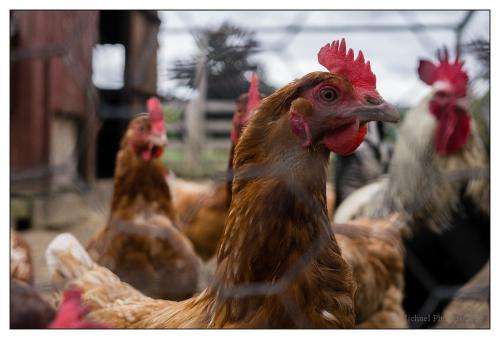Chickens still form line of defence in northern virus control

Sentinel chicken flocks in northern WA have tested positive for the deadly mosquito borne viruses Murray Valley encephalitis (MVE) and Kunjin, prompting a public health warning in mid-June.
The Department of Health (DoH) says no human cases have been detected but warns the diseases can be fatal and people in the Kimberley and Pilbara regions should avoid mosquito bites and be particularly vigilant when outdoors.
DoH entomologist Dr Peter Neville says it monitors 21 chicken flocks in major towns and communities in the northern two-thirds of WA that act as an early warning system for rare diseases.
"Chickens are used for a number of reasons; firstly, the main vertebrate hosts for MVE are waterbirds, particularly herons, and chickens are related to these birds.
"Secondly, while chickens can become infected with MVE and develop antibodies to the disease, they do not produce a high enough viraemia that will infect subsequent mosquitoes, and thus the disease cannot be spread to human populations."
Twelve chickens are issued to each location in September each year before the wet season and bled regularly throughout the year. The samples are screened for the diseases at the Arbovirus Surveillance and Research Laboratory at the University of Western Australia.
In a paper published in PLOS Neglected Tropical Diseases in January researchers, including Curtin University's Linda Selvey, described MVE as the most serious of the endemic arboviruses in Australia.
The most recent outbreak was 2011 when 17 cases were confirmed across Australia, nine of which were in WA and one of which was fatal.
The study reviewed the outbreak, observing that it involved parts of Australia where cases had not occurred for decades.
In addition, Prof Selvey says it demonstrated continued change to the demographics of those affected.
"The epidemiology in this outbreak reflects a change that has occurred over the past 15 years, with more non-Aboriginal cases, fewer children and more cases that were not resident where they acquired the infection than had been observed prior to 2000," the study concluded.
"The outbreak was associated with significant flooding in many parts of Australia and most cases reported either outdoor activities where mosquito exposure was highly likely or significant mosquito exposure."
Dr Neville says MVE and Kunjin depend on a number of factors for amplification and spread, including rainfall, mosquito breeding cycles, presence of appropriate hosts and presence of the virus itself.
The combination of all these factors does not necessarily coincide every year making it difficult to predict in human populations.
He says for this reason the sentinel chicken program is very important.
More information: Selvey LA, Dailey L, Lindsay M, Armstrong P, Tobin S, et al. (2014) The Changing "Epidemiology of Murray Valley Encephalitis in Australia: The 2011 Outbreak and a Review of the Literature." PLoS Negl Trop Dis 8(1): e2656. DOI: 10.1371/journal.pntd.0002656















